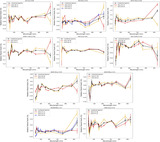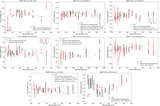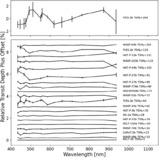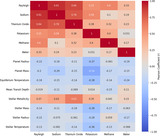Image Details

Caption: Figure 2.
Left: a comparison of the difference in brightness between the target star and comparison star and the ratio of the out-of-transit precision measured for 330 light curves observed on 22 separate nights using both the comparison star method (σCOMP) and the CMI method (σCMI). On average, we find the CMI method improves light-curve precision by a factor of ~1.5 for comparison stars within 1 mag of the target star or brighter. We only found the comparison star method to improve the precision on seven out of 330 light curves. Right: the achieved dispersion in the light curve of WASP-33 b observed on 2022 September 8 when using the CMI method (black; σ = 3 × 10−4) and when using a traditional comparison star method (red; σ = 3 × 10−3). We find a factor of 10 improvement in out-of-transit precision quality when using the CMI method for this light curve.
Copyright and Terms & Conditions
© 2025. The Author(s). Published by the American Astronomical Society.










